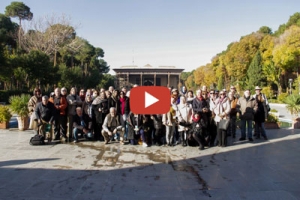Ancient Persian Nomads
Ancient Persian Nomads
As the cool breeze of autumn brings the news of cold-days-coming the nomads start packing up their home to move to warm areas. The mountains and plains of Iran are their courtyards, they are the sweetheart of this land; they are Persian nomads. Going to Iran Mountains during a summer tour in Iran will give you a great opportunity to see the nomads at the base of the mountains.
Plains, mountains, and river banks have been the homeland of nomadic people for many centuries now. These ancient people are still living in an antique nomadic way.
From the eighth to sixth centuries BC the tribes living in central Asia and Iran shifted to living a nomadic life because of the economic growth of cattle breeding. And for tribes to feed their cattle and keep them healthy and alive they had to move with the moderate climate.
Living in the heart of nature made the nomads the true experts in using the most basic material available to them and converting them to the most practical tools and gears for a living. Throughout the centuries nomads learned to flawlessly weave their sheep’s wool to make tents to protect them from natural elements such as wind, rain, and sunlight. No one knows the date that weaving originated or from where the nomads gained knowledge about the great and unique functionality of sheep’s wool as the best material for their tents.
The extremely talented nomadic women are the identity of handicraft workers in Iran. They amaze us by making the walls and roofs of their home, from goat wool, with their own hands. These all-time travelers weave a home for their family that is light and easy to move, also a warm/cool home for all seasons of the year. In rain, the goat wool sticks together and stops the water and humidity to enter the tent. During the warmer days, the hairs of this fabric are parted from each other which lets the fresh air get into the tent.
The hands of the Bakhtiari people gained seven UNESCO Seals of Excellence in 2015. These beautiful hands weave cotton, silk, and velvet so gorgeously that can win the award of excellence from UNESCO. Bakhtiari Tribe has passed their stunning knowledge on converting the local raw materials from the most sustainable resources to a spectacular piece of work that not only decorates our home but also becomes a purely ornamental piece of our soul. On your tour in Iran, if you don’t get to meet the nomads, you can buy their crafts from the stores in most cities.
“Kilim” a Turkish word refers to a textile produced by a flat-weaving technique that has been passed through generations by the ancient nomadic people. Kilim is primarily made of sheep wool; goat, camel, or horse hair, cotton, and silk are sometimes used as well. A knife, scissors, beating comb, loom, and a shuttle are the tools that nomad women use to weave the Kilims. Leaving a gap between two color blocks in the Kilim creates a slit, which refers to the name slit-weaving technique that is used to weave this beautiful handicraft. Kilim is not used for covering floors only. There are mule saddles, hangings, bench or divan coverings, and bags that are made of this textile too. It can be a great souvenir to buy for your loved ones when you go back home after your tour in Iran.
To live under any ceiling other than the sky is suffocating for nomads. No land can bear to hold their strong roots and these people are constantly on the move. Traveling thousands of miles every year is like chasing life. They have nature flowing in their veins so they can change by the seasons’ changes in the year.
Are you planning to travel to Iran and looking for an Iran travel agency? Check out our Iran tours.




